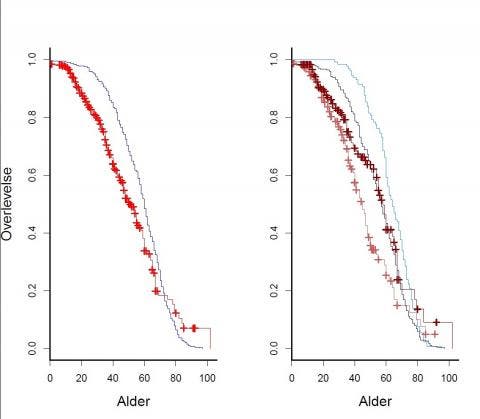“When you play the game of thrones, you win or you die,” Queen Cersei said. Apparently, she was right.
George R. R. Martin started writing the first Game of Thrones (GoT) novel in 1996. That’s right kids, A Song of Ice and Fire, as the fantasy series is called, started more than 20 years ago. But it definitely blew up when HBO turned it into a TV series. It was an instant hit. The drama, the strong, believable characters — and the violence. GoT stood out through violence, leaving many people wondering if they’ve gone too far. As it turns out, the answer is no — they haven’t gone too far. In fact, they haven’t really gone far at all. The fatality rates in the series match those in reality.
Celine Cunen, PhD student at the Department of Mathematics at University of Oslo has examined whether the mortality rate in GoT is higher than that of a real civil war from the Middle Ages. She compared the fantasy with the famous War of the Roses, a civil war that ravaged England between 1455 and 1487, from which Martin took a lot of inspiration. Cunen found that mortality rates of main characters in the TV show match the mortality rate of the noble classes in the War of the Roses.
This might come as quite a shocker for most people, but we tend to forget just how brutal and unforgiving those times were. That a series which strikes us as incredibly violent is just normal for the Middle Ages says a lot about those times, as much as the ones we live in now.
Statistics for “important” people

Left: Graph of survival for GoT characters (red) and War of the Roses people (blue). The faster the arc falls, the higher the mortality rate. Right side: Graph of survival for noble GoT characters (dark red) and GoT commoners (light red) and noble historical people (dark blue) and historical commoners (light blue). Graph: Celine Cunen/UiO.
The Wars of the Roses was fought between supporters of two rival branches of the royal House of Plantagenet: the House of Lancaster and the House of York. This is mirrored in the GoT series as the Houses of Lannister and Stark (spoiler alert, in the real war, the Lancasters won). Although Martin mentions the lower classes more than other authors, it’s clear that the books are biased towards the higher echelons of society — that’s where all the cool things happen. The same can be said in the historical evidence of the War of Roses. The information we have is greatly skewed towards mentioning the nobles. In a world where rulers fight for the throne, there’s little place for commoners. So this is not a statistic made for the general population of the time, as Cunen herself mentions.
“The medieval wars were fought by the nobility and professional warriors. Furthermore, all historical data from these wars are completely fixated on so-called “important people”, meaning politicians or nobility. Consequently, this is not a comparison on these wars general mortality, but a comparison on the mortality between «important» people.”
The mortality rate in the War of the Roses and GoT, considering the sample, is very similar. Even without dragons, medieval noblemen managed to kill each other just as fine as Martin’s groundbreaking series. So remember, instead of cursing Martin or HBO for killing of your favorite character, you can just curse the reality who inspired them.
Cunen adds that she did all this for fun. She found that it’s a nice way of communicating statistics to a broad audience. Adding a layer of both historical and literary significance is just a bonus.
“I have to add: I did this just for fun. I am part of a group of researchers that wish to communicate statistics to the world. I regarded this as a good opportunity to do just that! However, it is of course impossible to obtain a correct statistical basis in a comparison between a TV-show and a historical war. But it might give you some idea of the realism of the show!”










